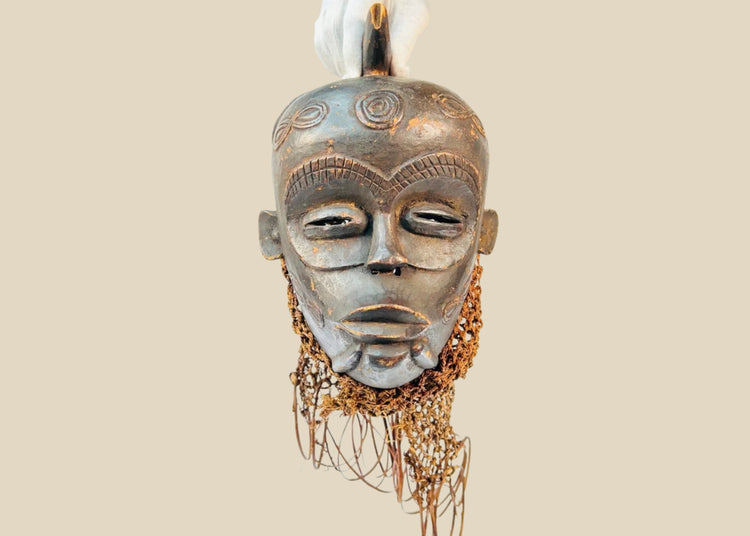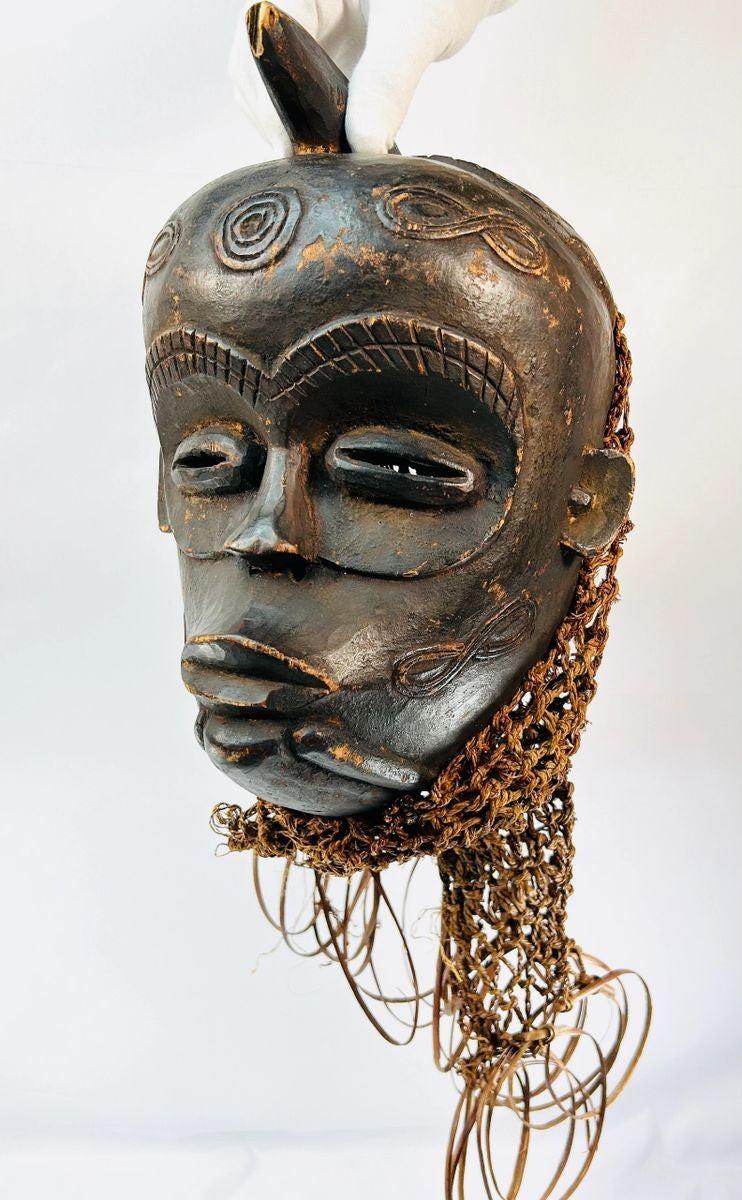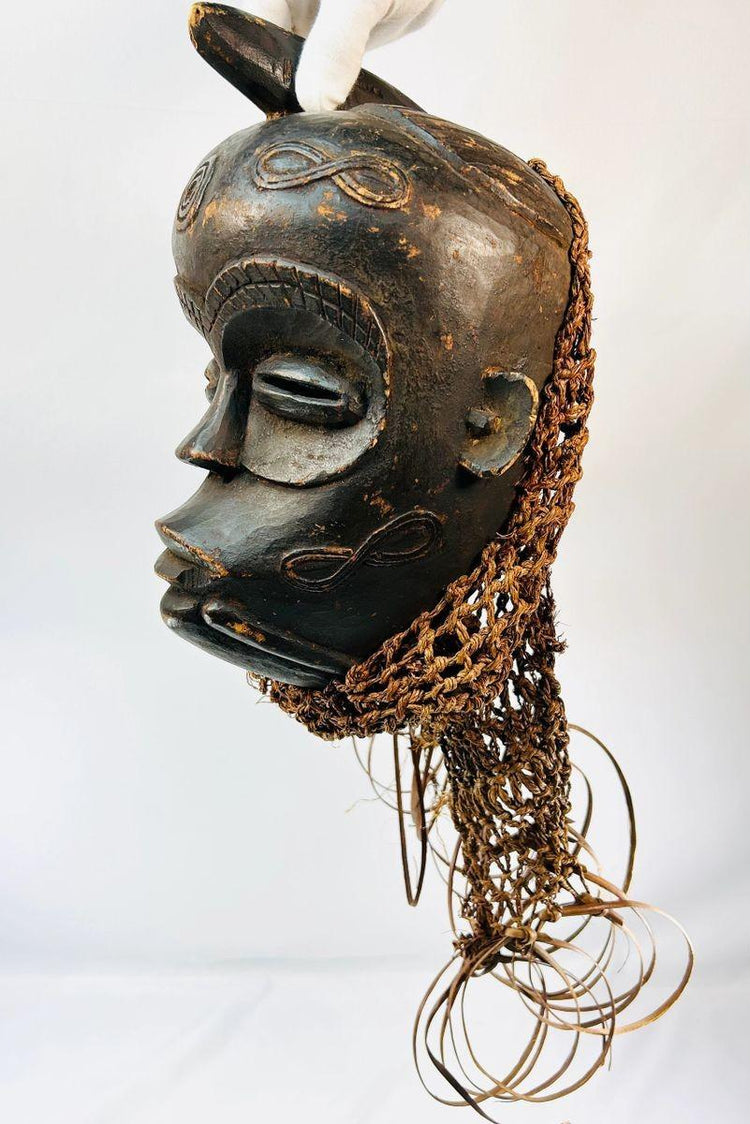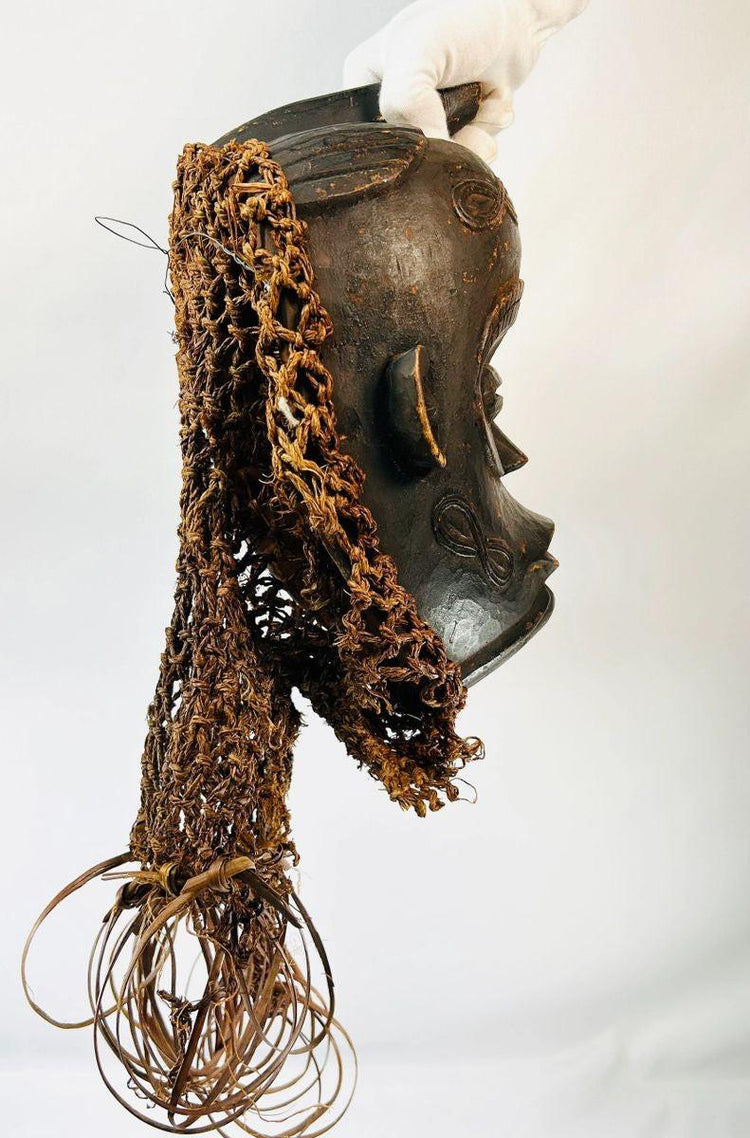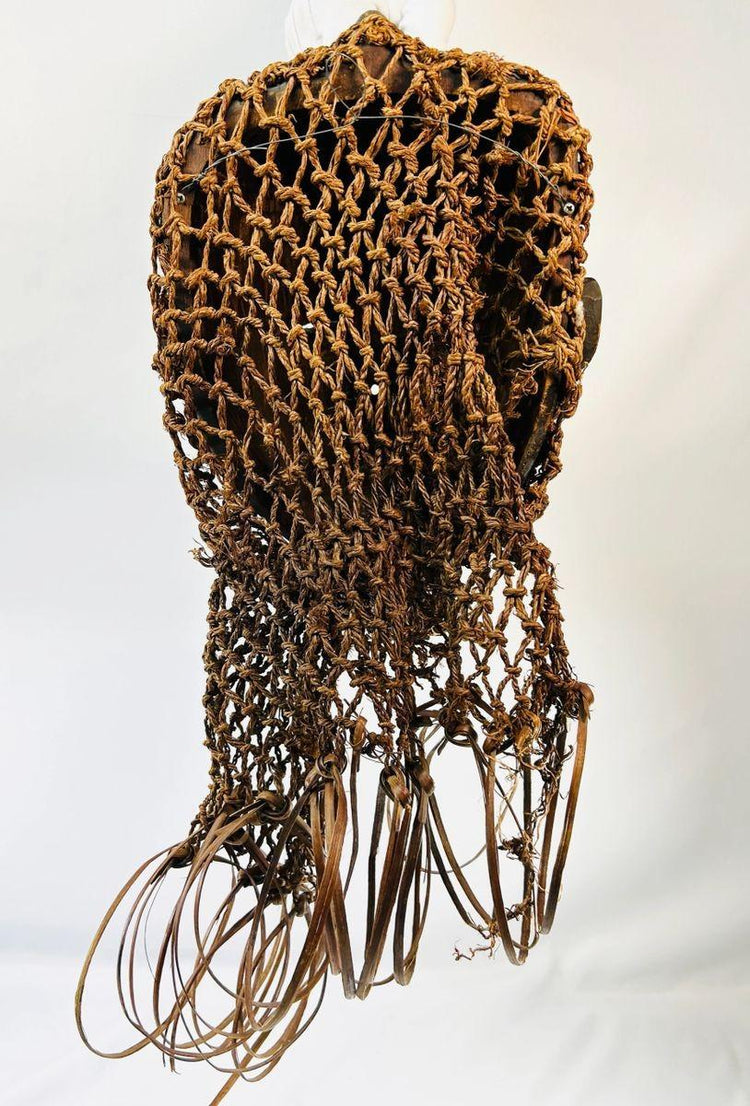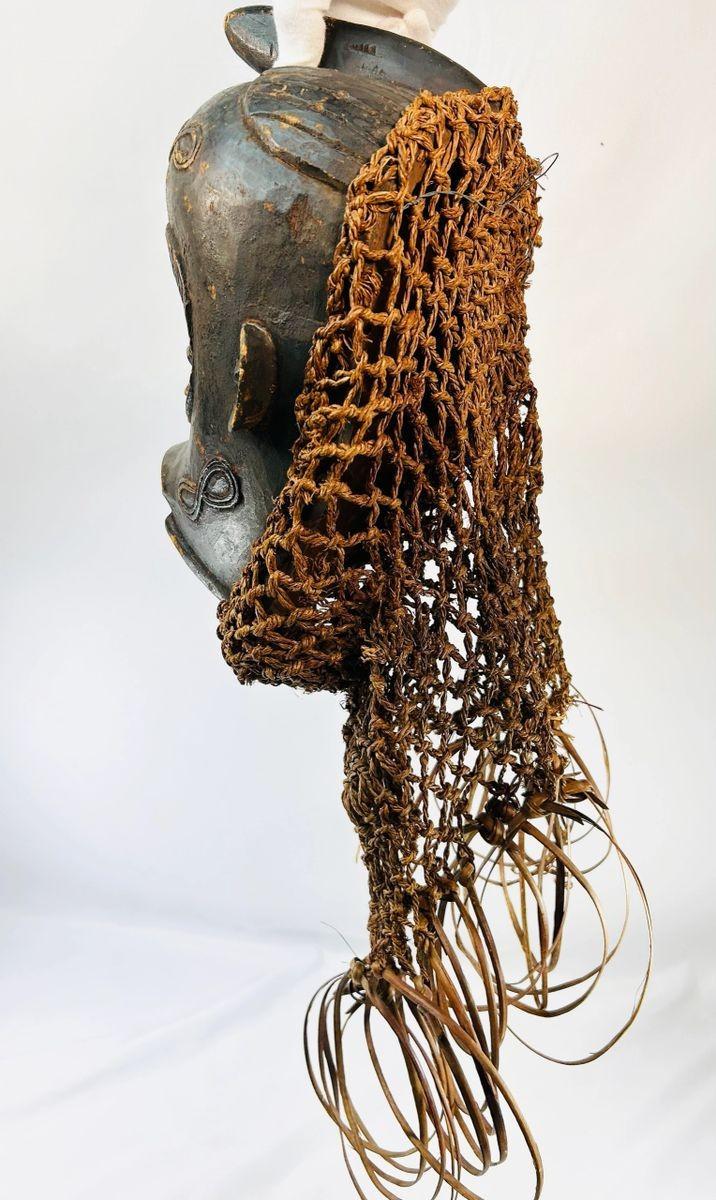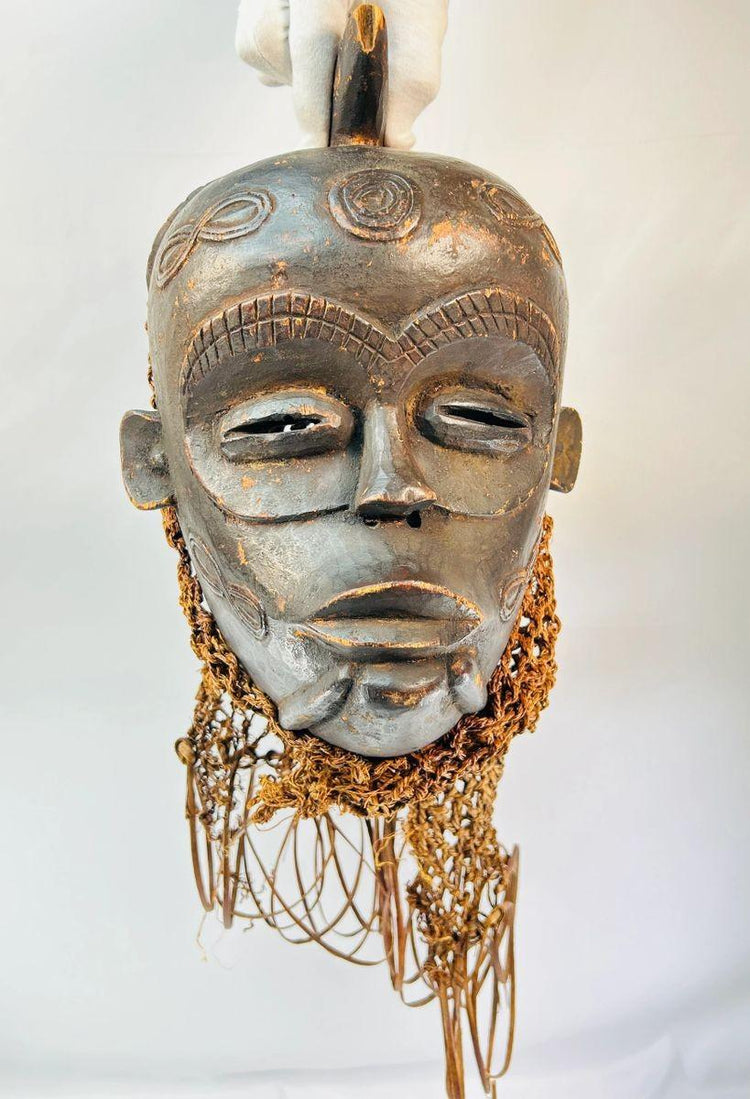Traditional African Mask with Intricate Carving and Wickerwork | Mid-20th Century
Description
More
Less
Historical Context & Origin
Region: Central Africa (Angola, Zambia, Democratic Republic of Congo)
Material: Carved wood with wickerwork and fiber adornments
Period: Likely 19th–20th Century CE
Description
This finely carved wooden mask is a remarkable example of Chokwe artistry, originating from Central Africa. Renowned for their rich cultural traditions, the Chokwe are celebrated for their ceremonial masks, which embody both artistic refinement and spiritual depth. This mask features a pronounced brow, serene closed eyes, and geometric forehead designs, hallmarks of Chokwe style. Wickerwork and fiber adornments add texture and dimension, enhancing its visual and cultural presence.
Features
-
Intricately carved facial details, emphasizing symmetry and stylization
-
Geometric forehead patterns symbolizing mysticism and identity
-
Serene closed eyes and pronounced brow, characteristic of Chokwe masks
-
Wickerwork and fiber attachments, creating depth and movement during rituals
-
Natural wooden surface with a rich, aged patina
Cultural Significance
Masks such as this held profound ceremonial importance among the Chokwe people. Used in initiation rites, dances, storytelling, and spiritual practices, they served as powerful connections between the living and the ancestral world. Believed to embody spirits, masks were worn by ritual specialists during sacred performances, guiding communities through rites of passage, religious ceremonies, and cultural narratives. Beyond aesthetics, they represent identity, heritage, and spiritual authority.
Condition
The mask remains in excellent condition with well-preserved carvings and adornments. Signs of wear, surface patina, and natural aging affirm its authenticity and long history of ceremonial use.
Dimensions (approximate)
Height: 14 in
Width: 11 in
Age
19th–20th Century CE
Learn More
Explore the history of traditional African masks and their cultural use: Traditional African Masks – Okanly Article
Browse more tribal, ritual & tribal-artifacts from our curated collection: Shamanic & Tribal Ritual Objects – Relic And Rarity Collection
Description
Historical Context & Origin
Region: Central Africa (Angola, Zambia, Democratic Republic of Congo)
Material: Carved wood with wickerwork and fiber adornments
Period: Likely 19th–20th Century CE
Description
This finely carved wooden mask is a remarkable example of Chokwe artistry, originating from Central Africa. Renowned for their rich cultural traditions, the Chokwe are celebrated for their ceremonial masks, which embody both artistic refinement and spiritual depth. This mask features a pronounced brow, serene closed eyes, and geometric forehead designs, hallmarks of Chokwe style. Wickerwork and fiber adornments add texture and dimension, enhancing its visual and cultural presence.
Features
-
Intricately carved facial details, emphasizing symmetry and stylization
-
Geometric forehead patterns symbolizing mysticism and identity
-
Serene closed eyes and pronounced brow, characteristic of Chokwe masks
-
Wickerwork and fiber attachments, creating depth and movement during rituals
-
Natural wooden surface with a rich, aged patina
Cultural Significance
Masks such as this held profound ceremonial importance among the Chokwe people. Used in initiation rites, dances, storytelling, and spiritual practices, they served as powerful connections between the living and the ancestral world. Believed to embody spirits, masks were worn by ritual specialists during sacred performances, guiding communities through rites of passage, religious ceremonies, and cultural narratives. Beyond aesthetics, they represent identity, heritage, and spiritual authority.
Condition
The mask remains in excellent condition with well-preserved carvings and adornments. Signs of wear, surface patina, and natural aging affirm its authenticity and long history of ceremonial use.
Dimensions (approximate)
Height: 14 in
Width: 11 in
Age
19th–20th Century CE
Learn More
Explore the history of traditional African masks and their cultural use: Traditional African Masks – Okanly Article
Browse more tribal, ritual & tribal-artifacts from our curated collection: Shamanic & Tribal Ritual Objects – Relic And Rarity Collection
You May Also Like




















